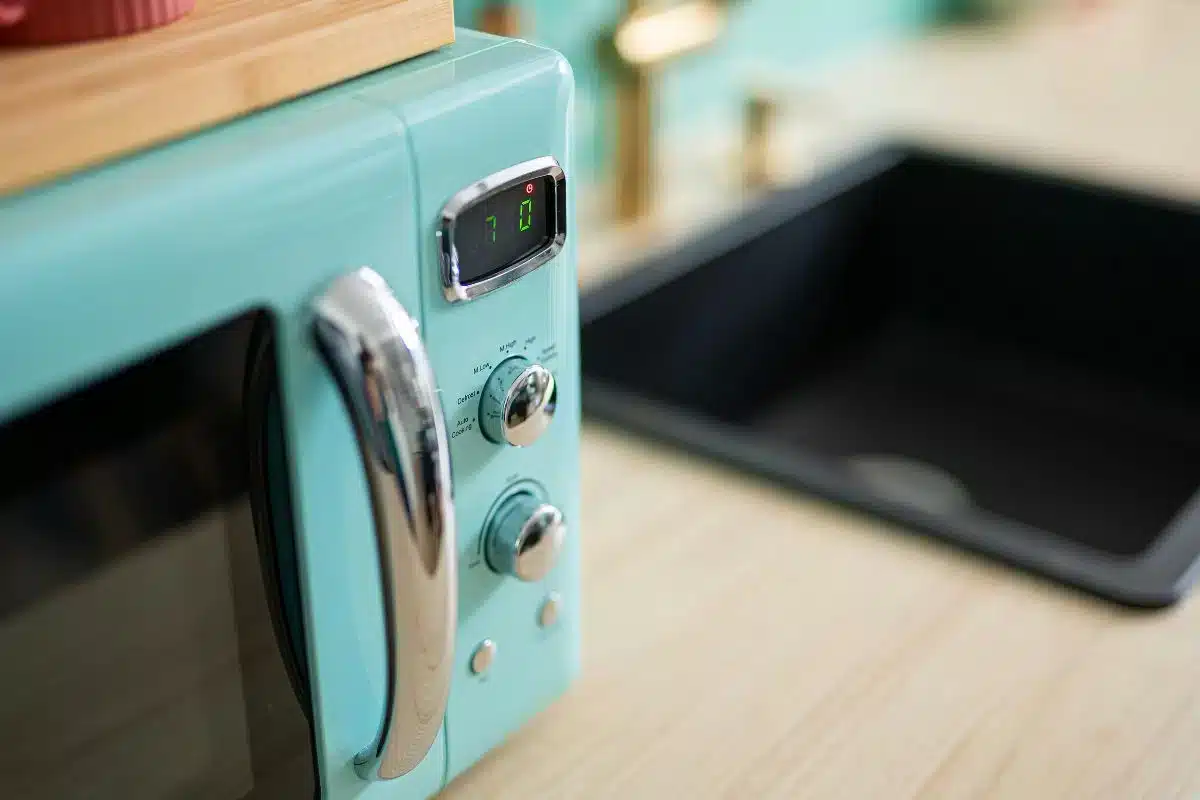Few people know this but putting a damp sponge in the microwave is one of the best cleaning hacks I’ve discovered. This simple technique transforms your kitchen appliance into a powerful sanitizing tool. Kitchen sponges harbor countless bacteria due to their moist environment and food residue exposure. Fortunately, your microwave offers a quick solution to this common household problem. Let’s explore how this unexpected trick can revolutionize your cleaning routine and create a healthier home environment.
The hidden power of your microwave for kitchen hygiene
Your microwave does far more than just heat food. This versatile appliance generates electromagnetic waves that cause water molecules to vibrate rapidly, producing heat. This same technology that warms your coffee can effectively eliminate harmful microorganisms lurking in your kitchen tools.
Kitchen sponges rank among the most bacteria-laden items in your home. Their porous structure creates the perfect breeding ground for pathogens like E. coli and Salmonella. Studies show that a typical kitchen sponge can harbor more bacteria than a toilet seat ! This contamination increases your risk of foodborne illness when the sponge transfers bacteria to surfaces or dishes.
While many homeowners replace sponges regularly, this approach wastes money and creates unnecessary environmental impact. The microwave solution offers an eco-friendly alternative to constant replacement. By extending sponge life through proper sanitization, you reduce waste while maintaining proper hygiene.
Beyond sponges, this technique works equally well for other cleaning tools :
- Dishcloths and kitchen towels
- Scrubbing brushes (non-metal)
- Silicone cleaning tools
- Small cleaning pads
Many modern kitchens feature energy-efficient appliances. While exploring microwave applications, consider how save energy while cooking with the reverse microwave techniques can further reduce your environmental footprint.
Step-by-step guide to sanitizing sponges effectively
The process of sanitizing your kitchen sponge using a microwave is straightforward but requires attention to important safety details. Follow these steps for optimal results without damaging your appliance or creating hazards.
First, thoroughly saturate your sponge with water. This crucial step prevents fire hazards and ensures proper sterilization. A dry sponge in a microwave presents a serious fire risk, while a properly dampened one transforms into an effective sanitizing medium.
Next, place the wet sponge in a microwave-safe container with approximately one tablespoon of water. This additional water creates steam that enhances the sanitizing process. Position the container in the center of the microwave turntable for even heating.
Set your microwave to high power and heat the sponge for two minutes. This duration kills most bacteria and fungi present in the sponge. The intense heat combined with steam penetrates the porous structure, reaching areas that normal washing might miss.
After microwaving, allow the sponge to cool completely before handling. The sponge and container will be extremely hot immediately after heating. Use oven mitts or wait several minutes before removing them from the appliance. This cooling period also allows residual heat to continue the sanitizing process.
Implement this cleaning hack weekly to maintain optimal sponge hygiene and prevent bacterial buildup. Regular sanitization extends sponge life while ensuring it doesn’t become a health hazard in your kitchen. Just as you carefully store hummus in the refrigerator to preserve its freshness, proper sponge maintenance preserves kitchen cleanliness.
Important safety precautions for microwave cleaning
While this technique offers excellent benefits, certain safety measures deserve careful attention. Following these precautions ensures you avoid damage to your microwave or potential injuries.
Always verify your sponge contains absolutely no metal components. Some scrubbing sponges incorporate metal fibers or staples that can cause sparking, fires, or damage to your microwave. Check the product packaging or inspect the sponge thoroughly before microwaving.
Never microwave a dry or nearly-dry sponge. The moisture content provides both the medium for heat transfer and prevents combustion. A properly soaked sponge should drip when squeezed lightly, indicating sufficient water content for safe microwaving.
Maintain visual supervision throughout the heating process. While rare, problems can develop quickly if the sponge begins to dry out or if it contains unexpected materials. Stay nearby to intervene if needed.
Consider adding a tablespoon of white vinegar or lemon juice to the water in your container. These natural ingredients provide additional disinfecting properties and leave your sponge smelling fresh. The acidic environment further inhibits bacterial growth after the heating process completes.
When seeking quality cleaning supplies, remember that product purity matters. Just as USDA organic and non-GMO verified standards ensure food quality, choosing high-quality cleaning tools improves your cleaning results and longevity.
Maximizing kitchen hygiene beyond sponge sanitizing
The microwave sponge technique represents just one component of comprehensive kitchen hygiene. Implement additional practices to create the cleanest possible food preparation environment.
Establish a regular schedule for replacing kitchen sponges, even with regular sanitizing. While microwaving extends usable life significantly, sponges should still be replaced every 2-3 weeks with normal use. Physical degradation eventually makes them less effective for cleaning regardless of bacterial content.
Consider maintaining separate sponges for different cleaning tasks. Dedicate specific sponges to dishwashing versus counter cleaning to prevent cross-contamination. Using color-coded cleaning tools for different purposes creates visual reminders of their intended use, reducing contamination risk.
The microwaved sponge technique exemplifies how everyday appliances often hide unexpected utility. This simple hack transforms a common kitchen tool into a powerful sanitizing method, creating a healthier home environment with minimal effort and zero additional cost. By implementing this technique alongside other thoughtful cleaning practices, you’ll maintain a kitchen that’s not just visually clean but genuinely hygienic.

